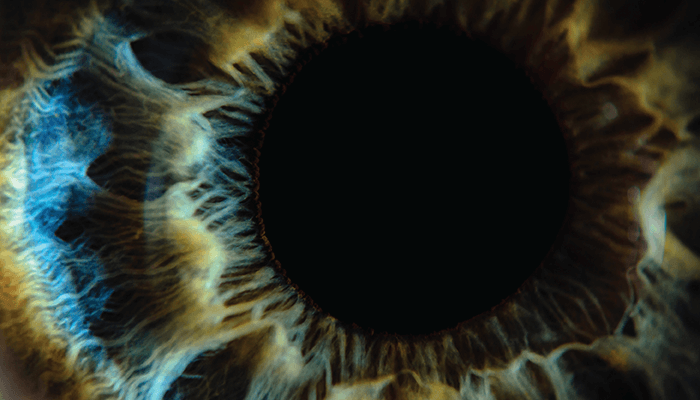
Explaining explantation. A new study evaluates the long term corneal endothelial changes and visual outcomes after iris-fixated phakic intraocular lens (pIOL) explantation in patients with endothelial damage. To collate sufficient findings, researchers conducted a retrospective review on patients undergoing pIOL explantation with corneal endothelial cell density (ECD). Including 44 eyes from 28 patients, the study found that although ECD continuously decreased despite pIOL explantation on a long-term follow up, patients did not experience discomfort or decreased visual acuity (1). The findings suggest that a follow-up is required for possible endothelial injury after pIOL explantation.
Lighting the way forward. New research investigates the safety and efficacy of low-level light therapy (LLLT) and intense pulsed light (IPL) for the treatment of meibomian gland dysfunction (MGD). 40 eyes of 40 patients with MGD were randomized to receive either LLLT or IPL over a four-week period. The results showed that although The Standard Patient Evaluation of Eye Dryness score significantly decreased after both LLLT and IPL, this improvement was significantly greater in the LLLT compared with the IPL group (2). Additionally, the LLLT group showed a higher increase in tear meniscus height, securing LLLT as the most effective therapy for treating MGD.
Crossing the bridge. Although corneal collagen cross-linking (CXL) has been proven to lower high-order aberrations (HOAs) in keratoconus, no evaluation of the effect of the procedure on stereopsis has been performed. A new study changes this by assessing the differences in binocular visual performance in patients with keratoconus before and after CXL. To assess this, 30 patients with keratoconus undergoing standard Dresden protocol epi-off CXL received, among other things, slit lamp examination, corneal tomography and a TNO stereoacuity assessment. The study found that patients with keratoconus showing a reduction of HOAs after CXL also manifest a significant improvement in stereoacuity post treatment (3).
Determining Demographics. To determine the possible associations between demographic and socioeconomic factors and graft survival after penetrating keratoplasty (PK), researchers conducted a retrospective chart review of patients undergoing PK at a tertiary-care corneal practice at Wills Eye Hospital. With a primary focus on measuring graft failure, researchers accounted for demographic and socioeconomic factors, including yearly average adjusted gross income. The results of 822 patients highlighted that individuals who were young, of Black ethnicity, and generated a lower income, were more susceptible to graft failure after PK (4).
Data on drugs. A retrospective cross-sectional study looking to determine the associations between systemic medications and surgically treated cataract in the US adult population aged 40 and above, between 1999 and 2008, identified 20 drug categories which have a significant association with cataract requiring a procedure, with eight of these associations remaining statistically significant after further accounting for pertinent comorbidities (5). The three drug categories that had the highest operating room values were tricyclic antidepressants, insulin and group III antiarrhythmic agents, with dose-dependent relationships being observed for all eight drug categories.
In Other News…
Caffeine Correlations. An assessment of the associations between caffeine intake and dry eye disease (DED) in the Netherlands demonstrated that dietary caffeine intake does not seem to be a risk factor for DED in the general population (6).
Reclassifying criteria. Researchers identify the four latent DED subtypes as normal, asymptomatic, symptomatic, and corneal neuropathic pain, enabling refined classification criteria for specific DED subtypes (7).
Cataract complications. The IRIS Registry has reported a significantly higher incidence of endophthalmitis in children when compared to adults, however, the associated factors remain largely unknown (8).
Two good options. Kahook Dual Blade (KDB) or Trabectome with cataract surgery are both safe and effective at lowering IOP and medication burden with the outcomes being similar, considering the study’s limitations (9).
Secondary questions. Presence of cataract in pediatric patients is rare, but is important in detecting intraocular tumors. They likely occur due to patients being subjected to multiple treatments, however the risk factor most associated with this is yet to be identified (10).
References
- T Y Kim et al., Cornea, 42, 150 (2023). PMID: 35120351.
- G Giannaccare et al., Cornea, 42, 141 (2023). PMID: 36582033.
- R Fasciani et al., Cornea, 42, 176 (2023). PMID: 35588393.
- W S Shalaby et al., Cornea, [Online ahead of print] (2022).
- R Deng et al., Am J Ophthalmol, [Online ahead of print] (2023). PMID: 36646239.
- M S Magno et al., Cornea, 42, 186 (2023). PMID: 35081066.
- Z Liu et al., Cornea, [Online ahead of print] (2022). PMID: 36541897.
- SH Rodriguez et al., Opthalmology, [Online ahead of print] (2023). PMID: 36646582.
- GD Fliney et al., Clin Ophthalmol, 17, 145 (2023). PMID: 36647517.
- B Sánchez-Cañal, VB Canto, J Fr Ophthalmol, [Online ahead of print] (2023). PMID: 36642598.
